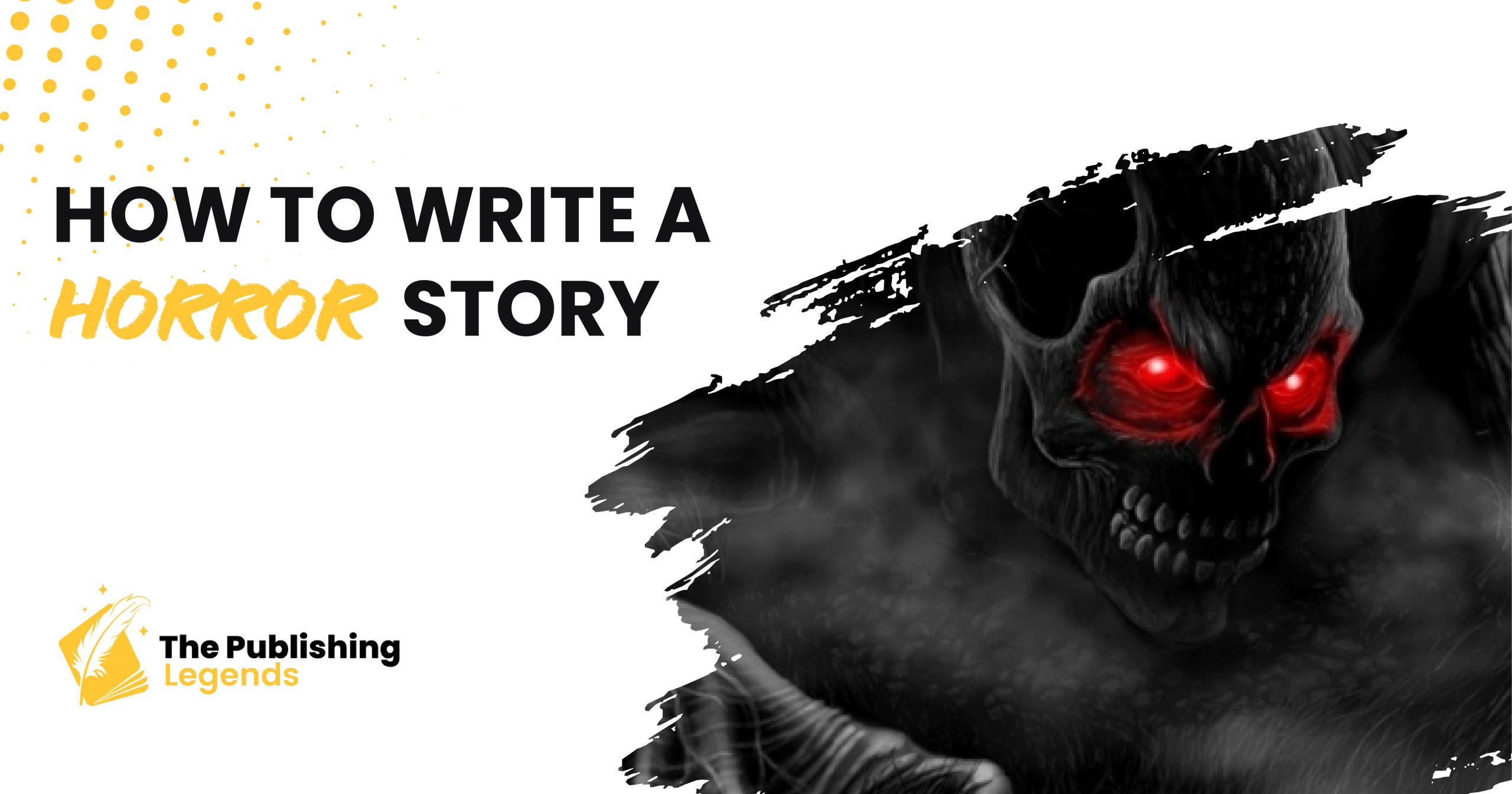As anyone familiar with horror literature or horror movies might tell you, the manner of writing a story that would make readers shiver and capable enough to spook readers at night is indeed a mix of art and skills. Horror is one of the rousing emotions as it deals with human essential responses and stimuli which are dread, suspense, and terror. Writing a good horror story entails the ability to weave well the setting the characters and the timing. Here is a guide for how to write a horror story.
Need help turning your horror manuscript into a published book? Let Publishing Legends handle it for you!
1. Understand the Essence of Horror
Horror is one of the oldest cinematic genres which primary focus is on evoking emotions of fright. The function can be to shock, uncomfortable, or make people frightened. A successful horror story immerses readers in a world where the unnatural feels disturbingly real, making them question their safety and assumptions.
Types of Horror
By now you should have some working knowledge of the major subgenres of horror. Understanding where your story fits can guide its tone and content:
• Psychological Horror: Covers the head and determines paranoia, insanity, and fear of what is beyond our comprehension.
• Supernatural Horror: What has or is possessed by ghosts, demons, or similar things.
• Gore/Slasher Horror: Originally based upon detailed violence and gore images.
• Cosmic Horror: This story is about the human fear of such countless and boundless unknowns and humanity’s relative irrelevance in the grand cosmic scheme of things.
• Survival Horror: Most can be described as movies in which the characters struggle to survive the horror they are in.
2. Create a Gripping Concept
Every horror story needs a good idea. This question is about your own phobias as genuine fears can make for excellent stories too that is where all good horror movies come from.
Key Questions to Consider:
- What is the core fear or threat in your story?
- How will the characters interact with this fear?
- What’s unique about your horror concept compared to others in the genre?
For example, a haunted house story becomes more intriguing if the house feeds on its inhabitants’ darkest secrets or traps them in an alternate dimension.
3. Develop Relatable Characters
Characters remain one of the most important components when it comes to writing a story, and this is true even when we speak of horror. Horror is only effective when readers care about the characters’ destinies, and their emotions are deeply evoked.
Crafting Strong Protagonists
• Relatability: Write them with weaknesses, insecurities, and aspirations. This is because of their humanity, the feeling of terror is more intense.
• Growth: Explain how it alters them. Are they able to overcome those phobias or are they defeated by them?
The Antagonist
In horror stories, the antagonist could be anyone like a ghost, a serial killer, or an abstract force, the antagonist should embody the story’s central fear.
Supporting Cast
Secondary characters are used to make the situations more tense. Interactions can say more about the protagonist himself or can be used as opposite images to the horror.
4. Build a Tense Atmosphere
The atmosphere is vital in horror. It’s the lingering unease, the creeping dread that keeps readers hooked.
Setting the Scene
- Make sure that the location of the horror scene fits accordingly with the appropriate environment. Lonely prisons, abandoned houses, woods, or creepy deserted towns are excellent settings for a reason.
- Use sensory details to make the environment come alive. Explain how you want your reader to hear the groan of the floorboards, smell the moistened wood or hear nothing at all as one walks in a deserted street.
The Power of Subtlety
- Keep the suspense– don’t show too much too early. The people’s fear should be built up organically through howling hints and implications.
- Use shadows, sounds, and other indirect cues to suggest the presence of danger.
5. Master Pacing and Structure
A well-paced horror story knows when to speed up and when to slow down. Balancing suspense and action is key to maintaining tension.
Structuring the Story
1. The Hook: Begin with an event or a detail that threshold – that pops up and requires action an instant disappearance, a strange noise or object for example.
2. Rising Tension: Increase the learners’ suspicions by providing more information about the threat and staking higher ground.
3. The Climax: Present a scene such as the antagonist staring down the main character providing an adrenaline rush.
4. Resolution: You can finish on a note of relief or continue with uncertainty and fear. Everyone has a right to have a happy ending but the story should leave a sense of closure.
Use of Cliffhangers
If you wish to continue the story in a series, the use of cliffhangers works best if you are leaving the reader with a cliffhanger as it ensures a return for more. They are best used at the end of speaking sections, for instance at the end of a chapter.
6. Write Effective Scares
Scares are the foundation of horror, ranging from sudden to psychological. Techniques for frightening readers include unexpected locations, build-up and payoff, and letting readers fill in the blanks. Avoid cheap tricks and ensure every scare serves the plot or character experiences.
7. Incorporate Themes and Subtext
Really good horror tales are very much like what lies below the surface, although they focus on the horror aspect of the story. That adds depth to the story and provides readers with something by which they can occupy their thoughts after the story is over.
Common Themes in Horror
• Fear of the Unknown
• Loss of Control
• Isolation and Loneliness
• The Monstrous Within
• Mortality and the Afterlife
They should sleep and be woven organically with your narrative. For instance, a story about a cursed object may be used to address issues to do with greed and obsession.
8. Revise and Refine
That means that the first time a horror story is written, it is most probably not the best it can get. The skills of editing and rewrites are vital with regard to the construction of any efficient narrative.
Steps for Revision
- Cut the Fat: Erases passages giving background information that isn’t necessary to connect scenes and that does not create suspense.
- Enhance Atmosphere: Introduce organizations of sensory report and make disciplinary to enrich the temper.
- Check for Consistency: Make sure practices adopted by characters within the plot maintain a plausibility of their own.
- Gather Feedback: Give your work to beta readers or writing groups. Their inexperienced eyes can point to the fact, that some tension seems weak, or the story lacks definition.
Let our expert editors polish your horror manuscript—Explore our Book Editing Services
9. Embrace Your Unique Voice
It will be your voice as a writer that shall define your horror story. Leaning towards one’s own personal fears and viewpoints is a way to create something more individual, something unique.
Tips for Originality
• Integrate surprising components, such as fusing science fiction and otherworldly horror.
• Steer clear of hackneyed clichés unless you’re redefining them in novel ways.
10. Final Touches
Once your story is polished, it’s time to think about sharing it with the world. Choose a mysterious title that hints at a core fear from the story
Like with any genre of writing, horror is not easy to write but then again it is very rewarding. Using the information provided in this guide, you will be able to produce a piece of a story that grabs the audience’s attention and gives them Goosebumps. Now go and dive deep into the darkness and write your heart out—Good luck!
Want a hauntingly beautiful book cover for your horror story? Check out our Book Cover Design service




